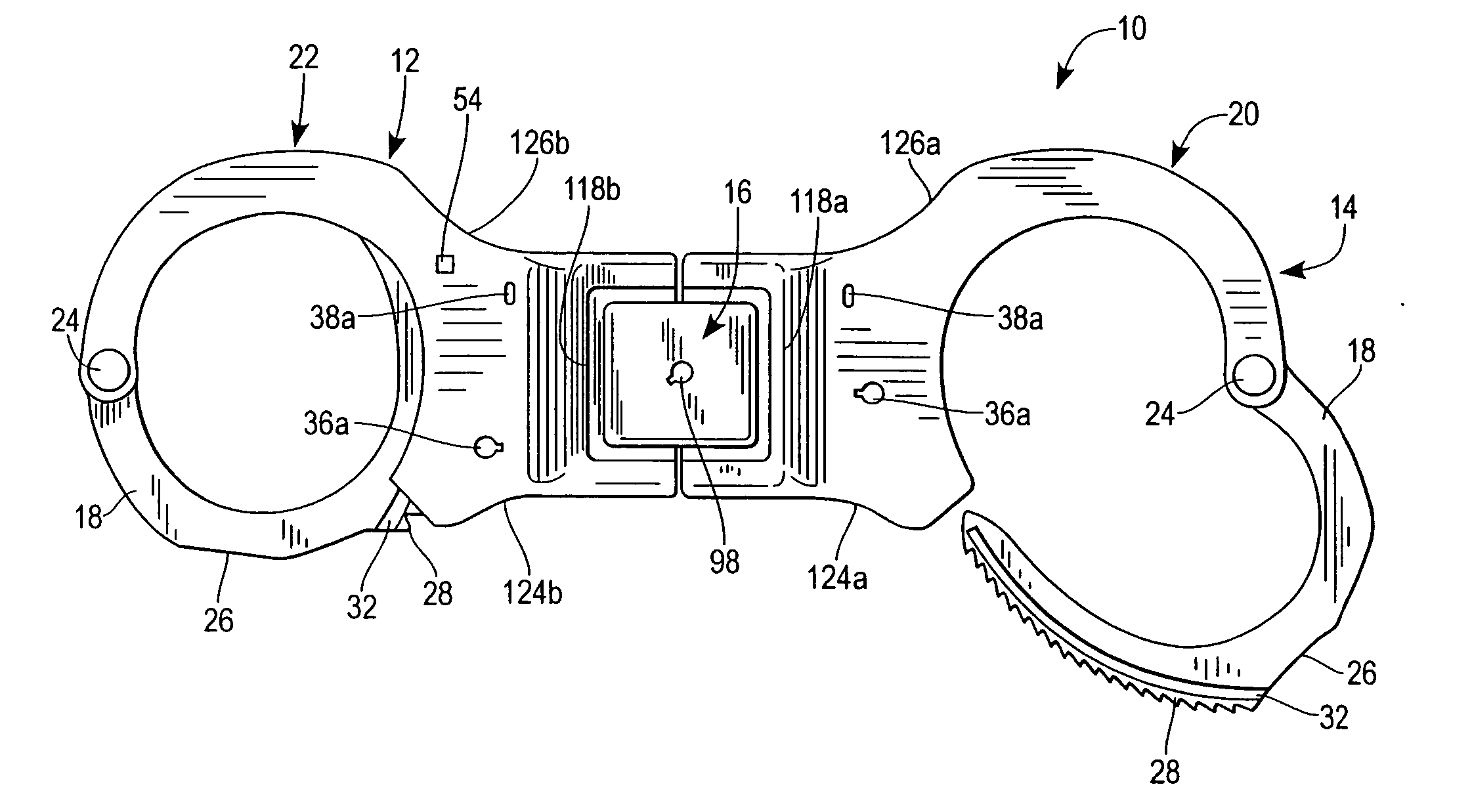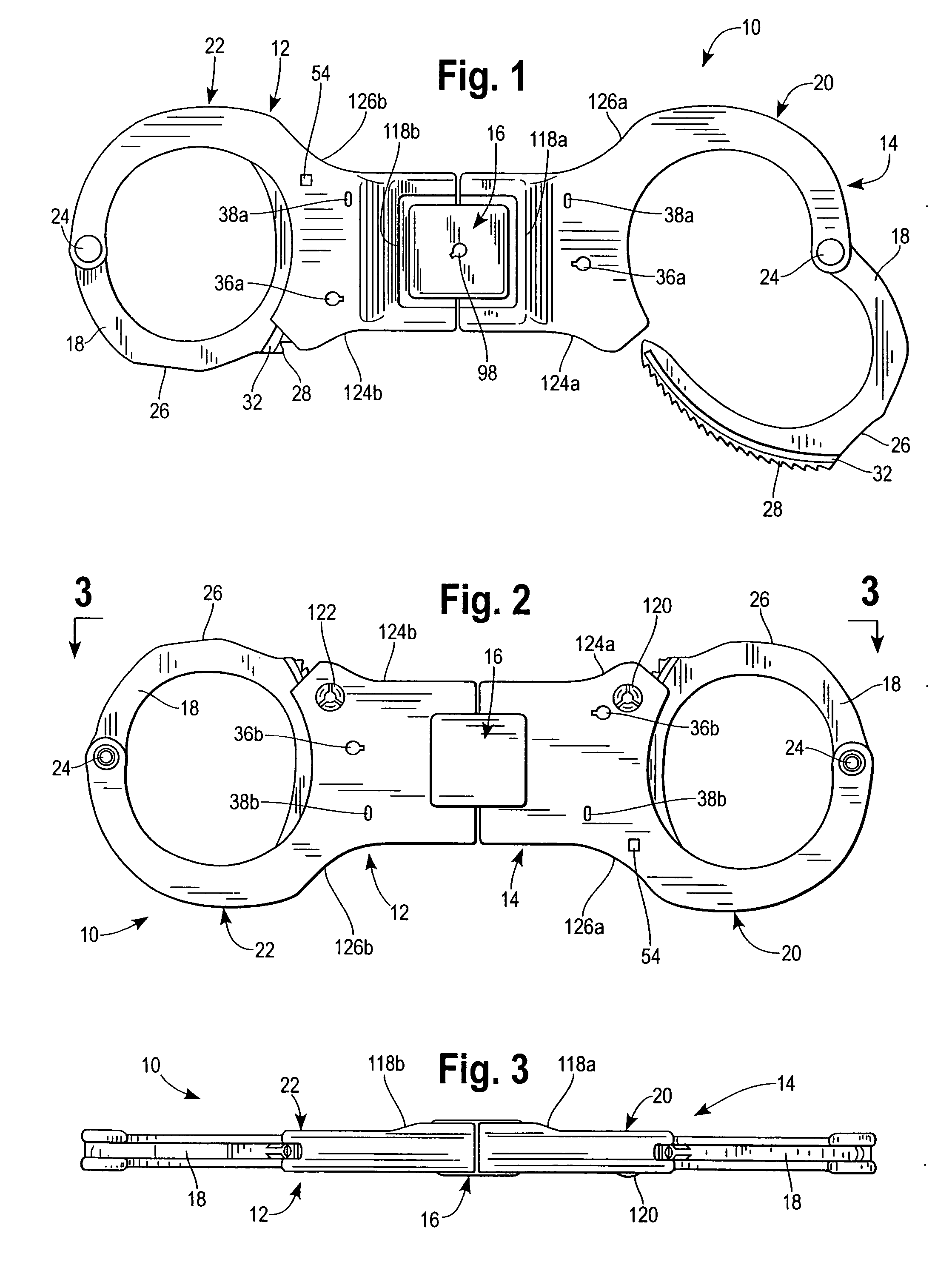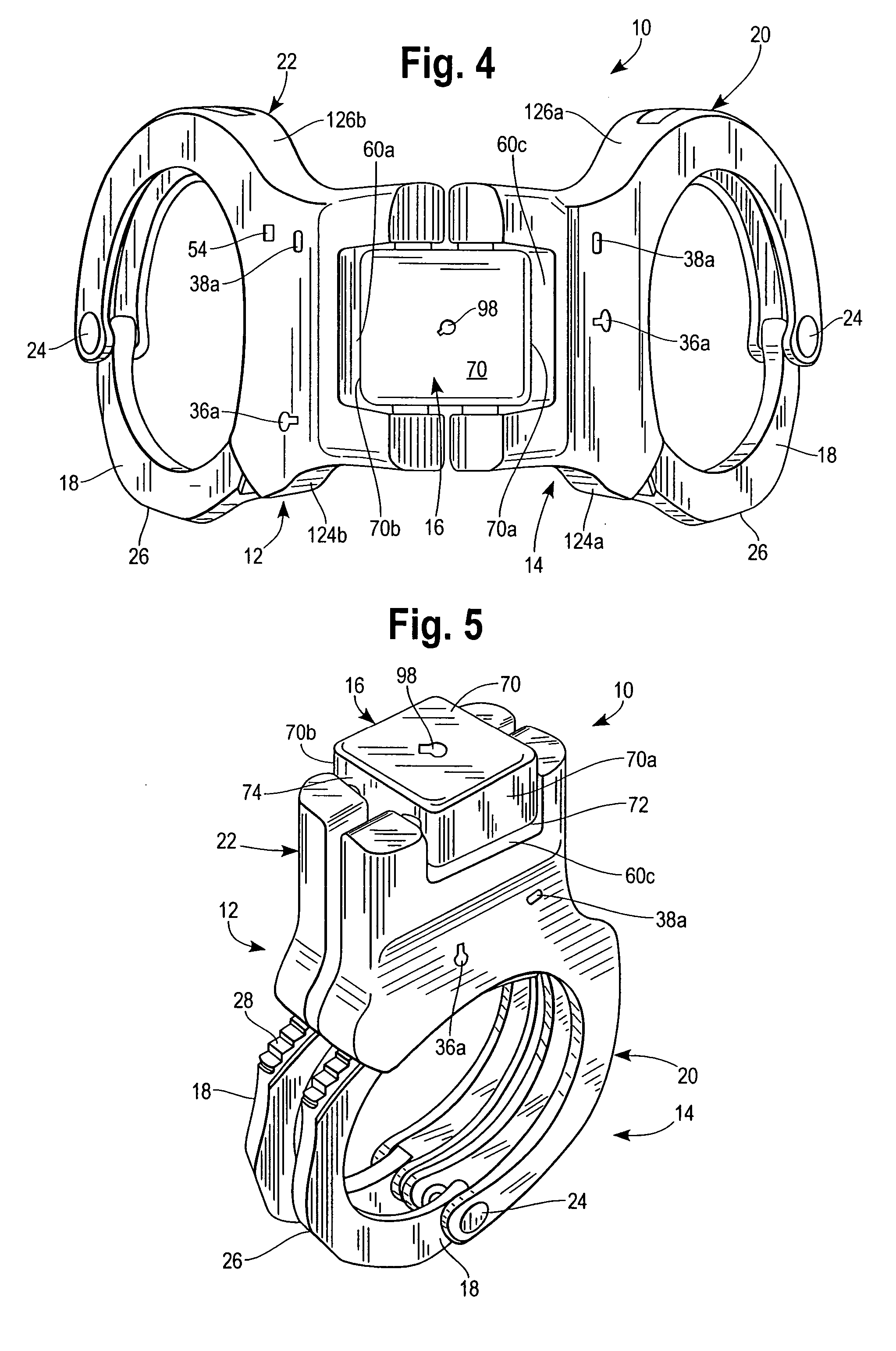Rigid handcuff
a handcuff and rigid technology, applied in the field of handcuffs, can solve the problems of placing the officer in a potentially dangerous situation, too large and cumbersome to be carried, and the rigid handcuffs are also too large and cumbersome to be conveniently carried, so as to prevent interference with the bow movement, high strength, and the effect of high strength
- Summary
- Abstract
- Description
- Claims
- Application Information
AI Technical Summary
Benefits of technology
Problems solved by technology
Method used
Image
Examples
Embodiment Construction
[0038] Referring now to drawings, and in particular to FIGS. 1-5, a rigid handcuff constructed in accordance with a presently preferred embodiment of the invention is indicated generally at 10. The rigid handcuff 10, which may be termed a handcuff assembly, includes a pair of bracelet type handcuffs 12 and 14 that are mirror images of each other and are pivotally or hingedly interconnected to each other through a connecting block indicated generally at 16. Very generally, the handcuffs 12 and 14 are adapted to be releasably locked in rigid aligned substantially coplanar relation, termed open positions as illustrated in FIGS. 1-3, but can be pivotally folded about pivot axes defined by the connecting block to positions wherein the handcuffs are in overlying substantially juxtaposed relation, termed closed positions as illustrated in FIG. 5.
[0039] Each of the handcuffs 12 and 14 includes an arcuately shaped bow 18 that is pivotally connected to a cheek plate assembly 20 that may be m...
PUM
 Login to View More
Login to View More Abstract
Description
Claims
Application Information
 Login to View More
Login to View More - R&D
- Intellectual Property
- Life Sciences
- Materials
- Tech Scout
- Unparalleled Data Quality
- Higher Quality Content
- 60% Fewer Hallucinations
Browse by: Latest US Patents, China's latest patents, Technical Efficacy Thesaurus, Application Domain, Technology Topic, Popular Technical Reports.
© 2025 PatSnap. All rights reserved.Legal|Privacy policy|Modern Slavery Act Transparency Statement|Sitemap|About US| Contact US: help@patsnap.com



